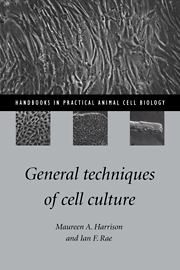10 - Health and safety
Published online by Cambridge University Press: 02 February 2010
Summary
Safety is primarily the application of common sense, care and caution. Long before any legislation was introduced, it was fully appreciated that laboratories as workplaces had certain inherent dangers associated with them and, as a result, most persons working in them took care not to endanger themselves. This also meant that other members of staff were comparatively safe and is the main reason why laboratories have always been statistically one of the safest places in which to work. Even today, most laboratories still operate with a philosophy of safety regardless of any introduced legislation.
Instruction in practical safety relating to a specific laboratory should be available from a senior member of the scientific or technical staff and/or from an organizational safety officer where there is one.
The following are a few general guidelines that should be followed wherever practicable when working in a laboratory:
Always wear a laboratory coat (preferably of the newer side-fastening ‘Howie’ type if possible).
Always wear disposable gloves when working. Both coats and gloves should be removed when leaving the laboratory.
Never eat, drink, chew, store food, smoke or apply make-up in the laboratory.
Never use the mouth to fill or discharge pipettes. Always use some form of manual pipette filler.
Hands must be disinfected or washed immediately if contamination is suspected, after handling viable materials and also before leaving the laboratory. Flush eyes and or mucous membrane areas immediately with water if they have come in contact with blood or other viable materials and seek medical assistance.
Perform all procedures so as to minimize spillages and the production of aerosols.
[…]
- Type
- Chapter
- Information
- General Techniques of Cell Culture , pp. 139 - 151Publisher: Cambridge University PressPrint publication year: 1997



